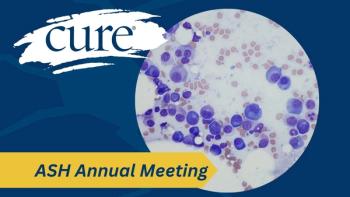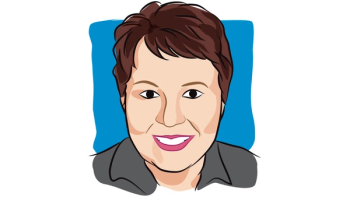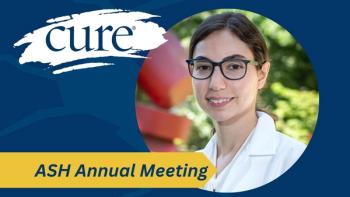
Childcare Programming in Cancer Centers Could Be Beneficial for Adult Patients
Parents who receive a diagnosis of cancer are often faced with the trials of prioritizing themselves over their children, causing stress, burnout and disruption in cancer care.
A study published as part of the 2021 ASCO Annual Meeting stressed the importance of patient-accessible childcare in cancer centers in North America. This study was influenced by the fact that approximately 20% of newly diagnosed patients with cancer in the subcontinent are between the ages of 20 and 54, many of which are the prime caregivers to children.
“They might be parents (or) they might be younger grandparents who are responsible for children, and they're having to balance that with grappling with a new cancer diagnosis,” said lead study author Katherine Preston, BSc, medical student at the University of British Columbia, in an interview with CURE®. “These patients are facing a very unique kind of stress.”
The study, which evaluated 161 cancer centers in Canada and the United States, found that only 26 contained patient-accessible childcare. Out of the 26, 76.9% were associated with pediatric hospitals, highlighting the need to bring similar programming to adult patients with cancer. “Adult hospitals could stand to learn something from pediatric hospitals,” Preston said, noting that it is not uncommon to find childcare at pediatric hospitals as they tend to take a more family-centered approach.
Out of the childcare programs found, 69.2% were in the U.S., 76.9% were open for over 30 hours per week and 88.5% were free of charge — an important note as parents facing a cancer diagnosis are at an increased risk for financial toxicity.
The lack of childcare programs found during the study presented the challenge of finding childcare for this patient subset, who already has to balance their own needs with their children. “Existing literature tells us that those patients tend to view themselves as parents first and as cancer patients second,” Preston explained. “Prioritizing their children and their childcare over their own selfcare often leads to exhaustion and burnout.”
Navigating A Cancer Diagnosis Without Childcare
For patients who have support from family and friends, the need for constant childcare could end up taking away from their own support system, according to Preston.
“That patient's spouse, or that patient's best friend, who might have been an extra set of ears (or a hand to hold) in their medical appointment, is now looking after (the patient’s) child,” she said. “So that patient is potentially having to trade off their personal support.”
Patients who do not have the available support system or socioeconomic status to hire childcare are often forced to bring their children to appointments — which can disrupt communication between the patient and provider — or worse, miss the appointments all together. “The more we look into it, the more we see the shortcomings of all the current options that patients (have),” Preston said.
The Benefits of Childcare for Children
Not only would the placement of childcare programs in cancer centers help relieve stress and burnout for adult patients, but there are potential benefits for the children as well.
“If we had all these children — perhaps who were going through similar journeys — accessing the same childcare, they could relate to each other,” Preston added. “Children who are really struggling could be identified and supported through different services at the childcare center or at the cancer center.”
The childcare programs could allow children of patients with cancer to develop a support system that may not have existed prior.
Next Steps
Of note, the study is moving into phase 2, which is focusing on asking patients and providers how they think childcare programs could help. “There's lots of unanswered questions, but I think that all of them come back to the same theme, which is: how do we best support patients with childcare?” Preston said. Other facets to consider include cost, location, age ranges of children, how long the care would need to be and whether drop-in or registration is preferred.
Preston noted that there were some limitations from phase 1, including the fact that they only observed 161 hospitals in Canada and the U.S. “It's likely that there were options out there that weren't captured by our study,” she said, noting that the hospitals included in the study were purposely pulled from lists of highly ranking centers. “…The assumption with that was that perhaps more highly ranked hospitals, especially when patient satisfaction was considered, would be more likely to have additional amenities such as child services.”
Because of this, Preston said that it would be beneficial for future studies to include hospitals outside of those in this specific study.
Another limitation is that the study only used publicly available information to find out about childcare centers in order to closely mirror the patient experience. “It's possible that doing things this way caused us to miss some more informal childminding services, or things that weren't well advertised on hospital websites,” she concluded. “I think the other side of that coin is that if patients aren't able to find out the information to access a childcare center, then maybe that's a problem in and of itself.”
For more news on cancer updates, research and education, don’t forget to





